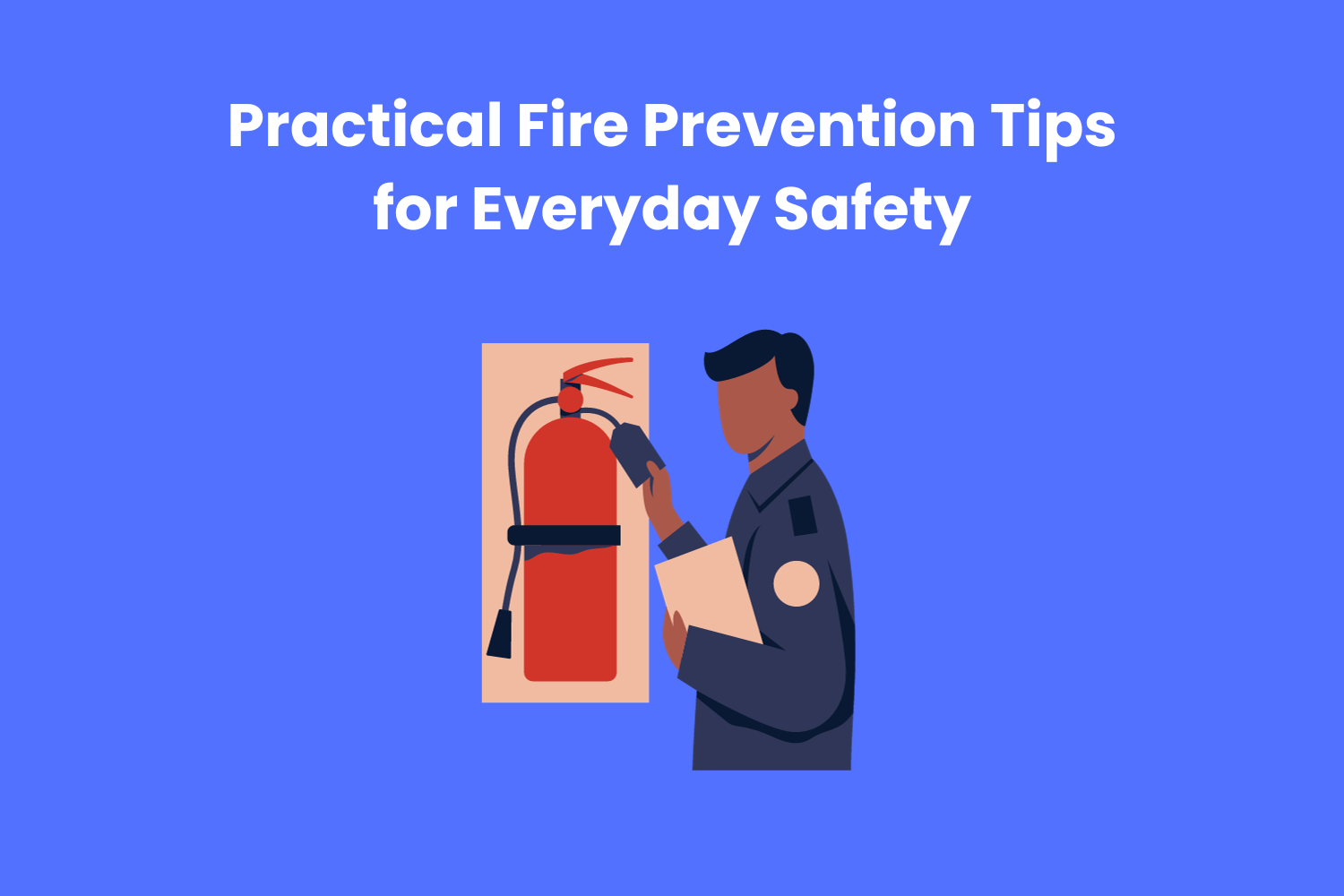Implementing practical fire prevention tips ensures that we can confidently navigate our environments, knowing that we are taking proactive measures to mitigate fire risks. In this blog, we’ll explore simple yet effective Fire Safety Tips that can be incorporated into our everyday routines, creating a safer living and working environment. The importance of Fire Safety cannot be overstated from homes to workplaces, and integrating these tips is a crucial step in minimizing risks.
Table of Contents
- Mindful Practices for Fire Safety
- Safety Measures in the Workplace
- Conclusion
Mindful Practices for Fire Safety
- Cooking Safety: Cooking is a common source of home fires. You must always be in the kitchen while cooking, particularly near the stove. Never leave a dishtowel or paper towel near a heat source, and always switch off the stove and oven when they are not in use to prevent the spread of fire.
- Electrical Appliance Awareness: Regularly inspect electrical cords and outlets for signs of wear or damage. Make sure that power strips and outlets aren’t overloaded. Turn off electrical equipment and fix damaged or frayed cables immediately when not in use. Keep in mind that using electrical equipment often might cause fires.
- Heating Safety: Exercise caution when using heating devices like space heaters. They should never be left alone and should be kept away from anything that might catch fire. Always have your chimneys and vents cleaned and examined to make sure your heating system is getting enough airflow.
- Smoking Safety: If you smoke, do so outdoors. Make sure the cigarette butts are fully blown out before using deep, strong ashtrays. Never light up when lying in bed because of how combustible bedding materials are. To enhance your health in general, you should think about stopping smoking.
- Candle Caution: While candles can create a pleasant ambience, they pose a fire risk. You should always put out a candle before leaving a room, keep it far from anything that might catch fire, and never leave a burning candle unattended. One safer option is to use flameless LED candles.
Safety Measures in the Workplace
- Emergency Exit Awareness: Learn the location of the exits at your place of employment in case of an emergency. Ensure no obstacles are blocking the exits and the exit signs are easy to see. Ensure you’re ready for disaster by practising evacuation routes during frequent fire drills.
- Proper Storage of Flammable Materials: Proper storage of flammable materials is crucial in industrial or commercial settings. Always store chemicals and combustible substances according to the manufacturer’s instructions. A well-ventilated storage facility, as is the use of suitable containers to lessen the likelihood of spillage, is essential.
- Maintenance of Fire Safety Equipment: Regularly inspect and maintain fire safety equipment in the workplace. You may find smoke detectors, sprinkler systems, and fire extinguishers among them. Ensure that fire extinguishers are readily available and in excellent repair and that all staff have received sufficient training on how to use them.
- Workspace Organization: Keep workspaces organized and clutter-free. Never stack anything too close to an electrical outlet or appliance that might cause a fire. Put a system in place to ensure the safe handling and storage of flammable products and appropriately dispose of waste items.
Conclusion
We owe it to ourselves, our families, and our communities to make fire safety a top priority in all that we do. Our homes, offices, and public areas can become safer through the integration of simple fire safety measures into our daily routines. Taking all necessary precautions, such as being cautious around electrical equipment and in the kitchen, is crucial for minimizing the risk of fire. Continuous education, including participation in Health & Safety Courses like fire safety courses, enhances our understanding and preparedness for emergencies. By adopting these measures, we contribute to creating a safer environment and reducing the likelihood of fires.










